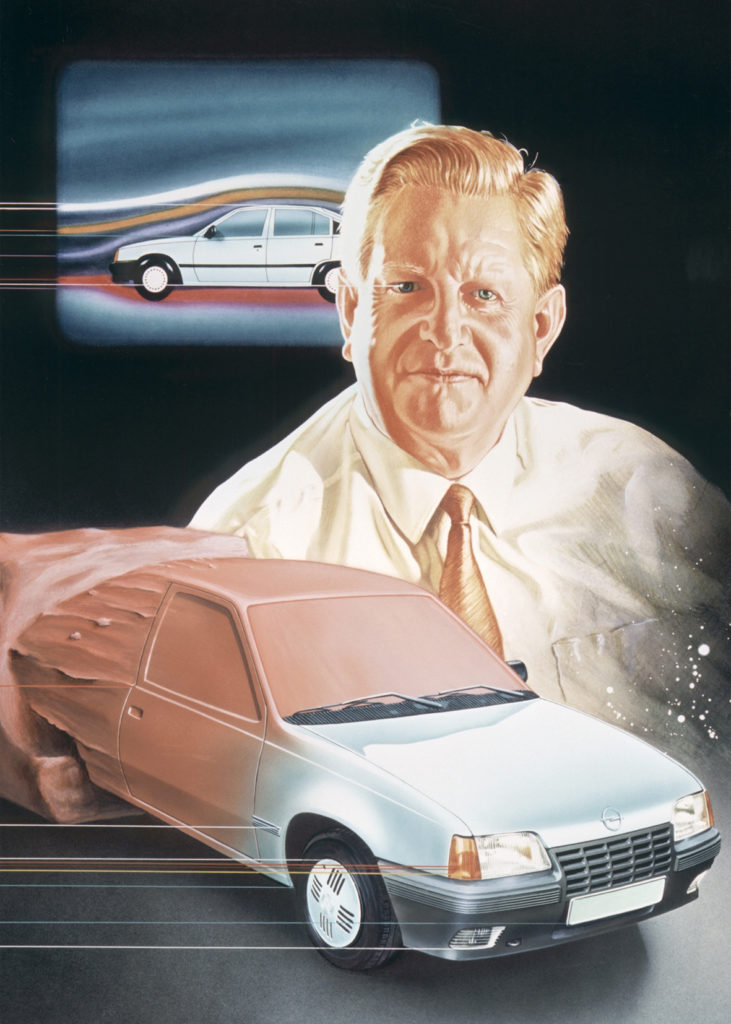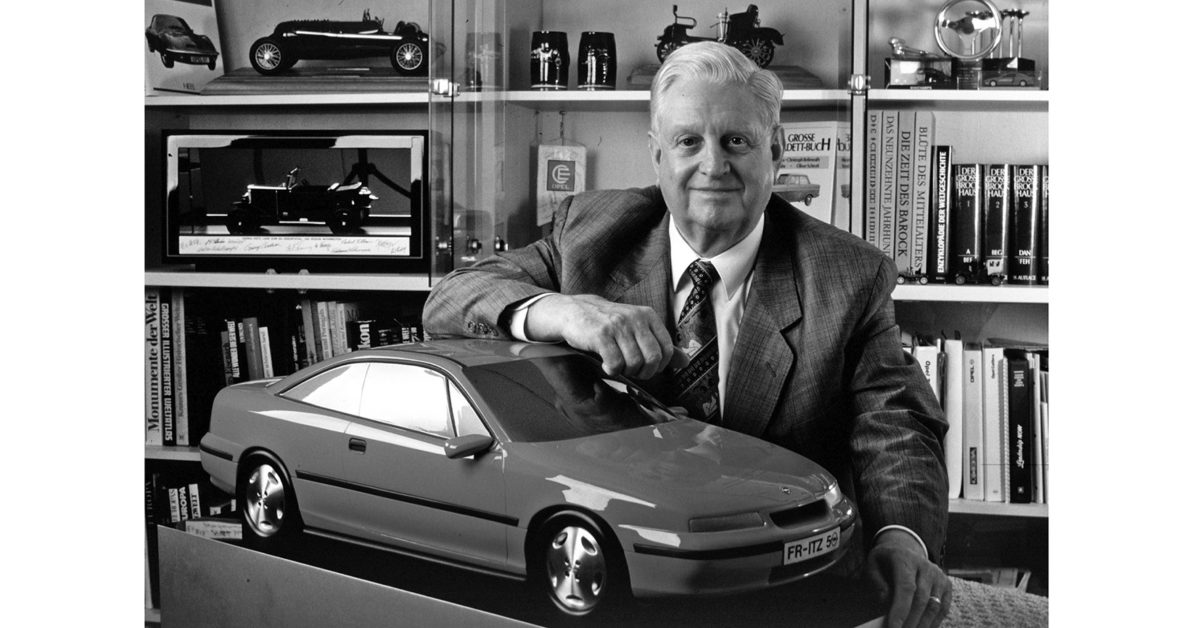Last Tuesday (August 9), the former Opel Director of Engineering and board member Friedrich W. (“Fritz”) Lohr passed away at the age of 95. With his extraordinary commitment and consistent, trend-setting decisions, he had a decisive influence on Opel vehicle development in the 1970s and 1980s. For example, he introduced front-wheel drive to Opel with the Kadett D in 1979. It was a groundbreaking step, about which there is a popular anecdote in the company: Because he faced stiff internal opposition to the new technology, the common international abbreviation for front-wheel drive (FWD) was reinterpreted at Opel as “Fritz will das” (Fritz wants it). He was to be proved right with his concept for more space: The trade press celebrated the Kadett D as a revolution, with the largest interior in its class at the time while maintaining compact exterior dimensions.
Leading representative of
German automotive technology
Fritz Lohr made many courageous decisions and set the course in 51 years of service at Opel until his retirement in 1991. Cars such as the Kadett E, Omega, Vectra A and Calibra were launched on his watch. Most recently, he played a key role in shaping the Astra F, which was presented at the International Motor Show in Frankfurt in 1991, with strategic decisions. Under his leadership, the company took on a pioneering role in environmental protection. From 1985, Opel was the first German manufacturer to offer a vehicle with a catalytic converter in every model series. In an interview in 1990, he said: “Further reduction of fuel consumption has top priority.” He also had the future of electric mobility in mind more than 30 years ago: “Electric vehicles will possibly exist especially for inner-city traffic.”

With his decisions, Fritz Lohr had a decisive influence on Opel technology – for decades.
Fritz Lohr’s career within the company was unusual: He joined the company in 1940 as an apprentice and wanted to become a toolmaker. But as it turned out, the 13-year-old was – as he himself later admitted – “not a good craftsman”. Instead, the instructors quickly recognised his excellent spatial awareness and after a year he switched to vehicle development as a draughtsman. After military service and being release from prisoner of war captivity, he studied mechanical engineering in Friedberg and Darmstadt as the first scholarship holder of Adam Opel AG. When he returned to the company after his studies in 1950, he initially worked in a small team of twelve colleagues in advanced development. Here he got to know all areas of vehicle development. His further rise in the engineering centre was rapid.
From apprentice to
director of engineering
In 1959, the company appointed him deputy chassis design engineer, in 1966 first engineer of the division, in 1969 head of department. From 1974 he was responsible for the entire advanced development, and in 1978 he was promoted to chief engineer for the body area. After being appointed Director of Product Development and Design in 1980, he was named to the Board of Management in the same year. As director of engineering, he was responsible for the product development and design of all GM Group passenger cars in Europe. In 1990, the Rheinisch-Westfälische Technische Hochschule Aachen awarded the later Supervisory Board member the dignity of Dr. Ing. E.h. And even in retirement Fritz Lohr continued his commitment as President of the “Gesellschaft zur Förderung des Ingenieur-Studiums e.V.” in Rüsselsheim
August 2022
